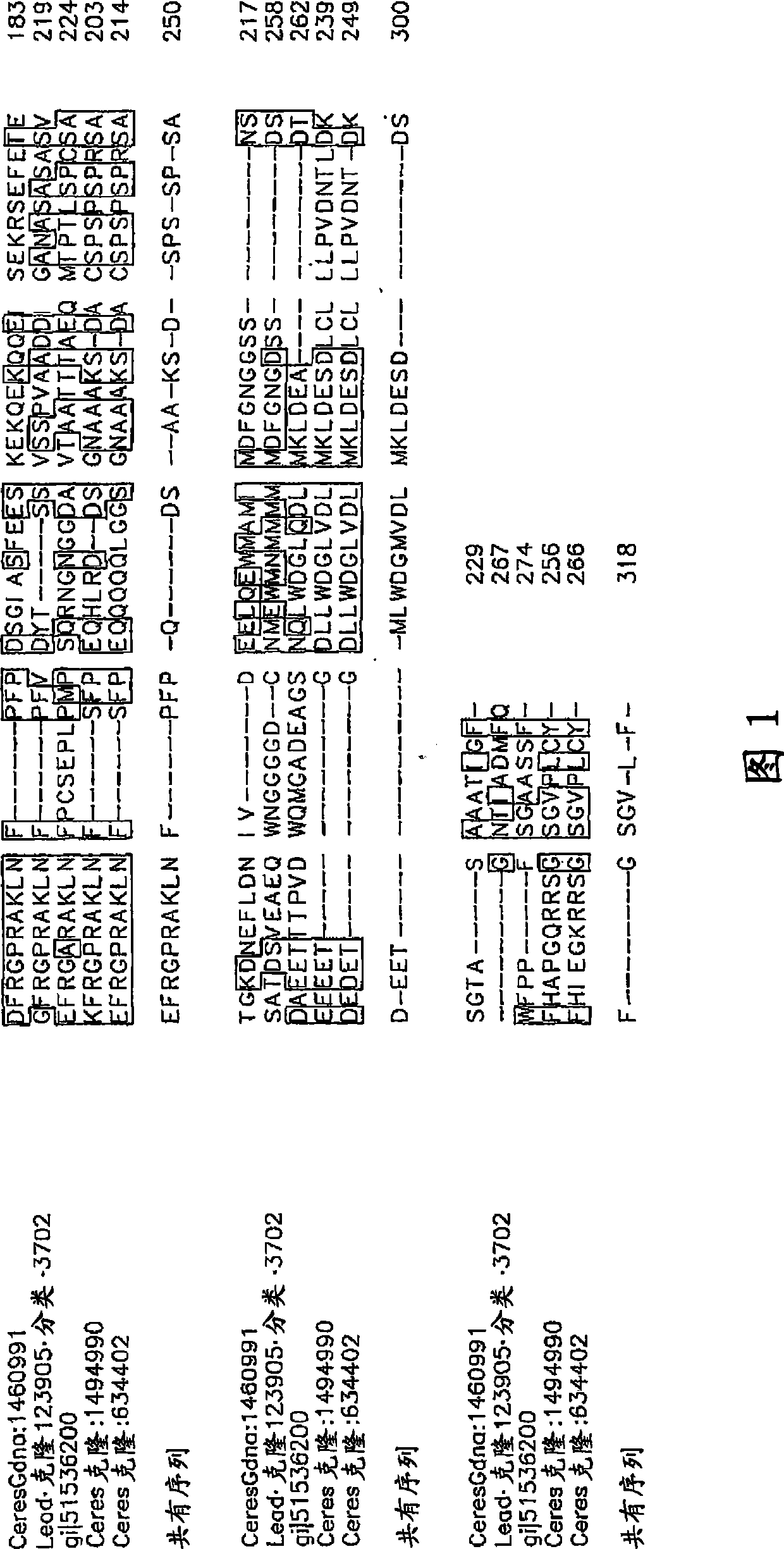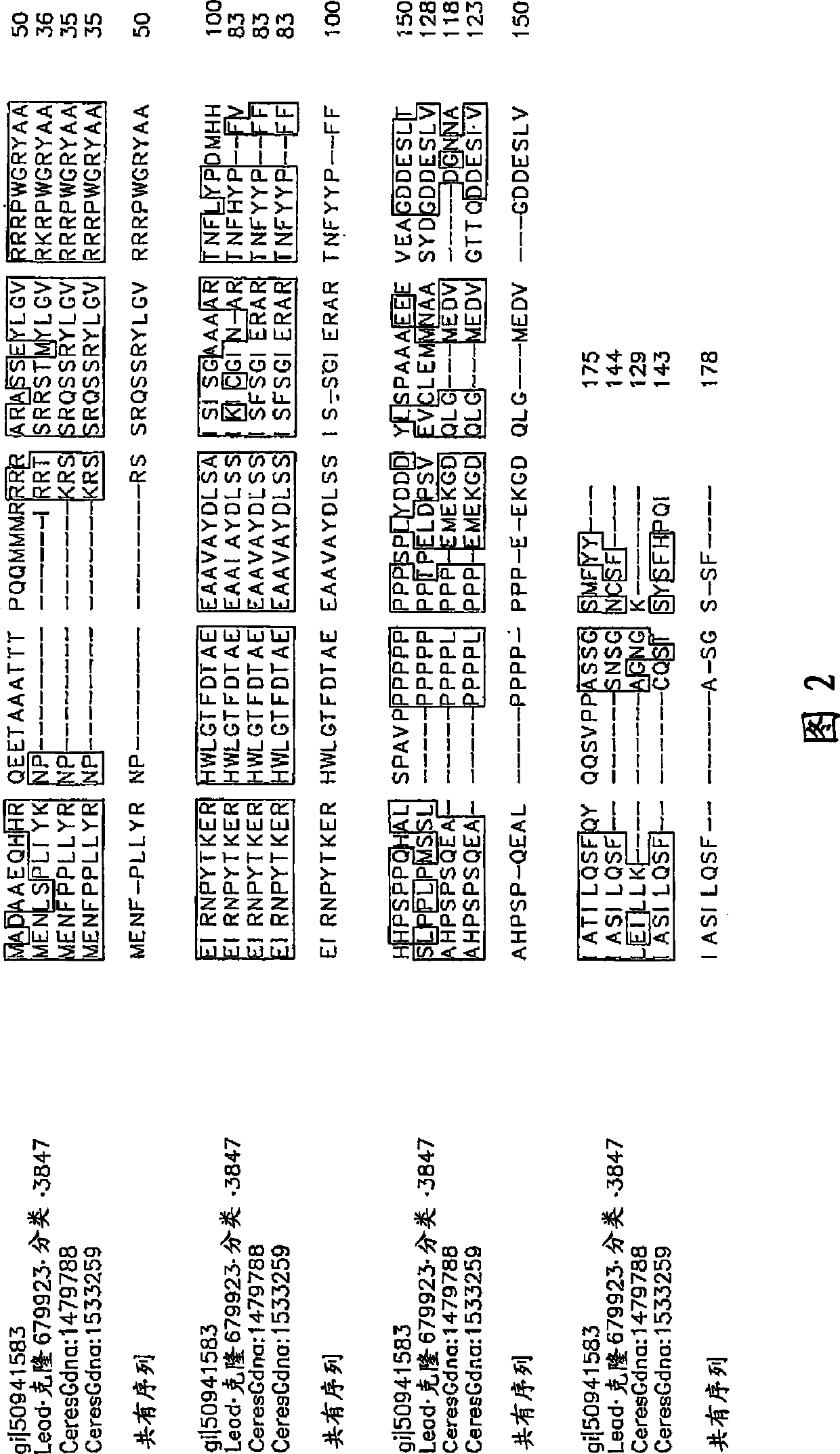Nucleotide sequence and corresponding polypeptide for endowing plant with adjusted growth velocity and biomass
A nucleotide sequence, biomass technology, applied in the field of transgenic plants, can solve the problem of time-consuming and laborious breeding process
- Summary
- Abstract
- Description
- Claims
- Application Information
AI Technical Summary
Problems solved by technology
Method used
Image
Examples
preparation example Construction
[0119] Preparation of soil mixture: 24L SunshineMix #5 soil (Sun Gro Horticulture, Ltd., Bellevue, WA) was mixed with 16L Therm-O-Rock vermiculite (Therm-O-Rock West, Inc., Chandler, AZ) in cement Mix in a cement mixer to prepare a 60:40 soil mixture. To this soil mixture was added 2 Tbsp Marathon 1% pellets (Hummert, EarthCity, MO), 3 Tbsp 14-14-14 (Hummert, Earth City, MO) and 1 Tbsp Peters fertilizer 20-20-20 (J.R. into the soil and mix thoroughly. Generally fill 4-inch diameter pots with the soil mix. The pots were then covered with 8-inch nylon membrane squares.
[0120] Planting: Aspirate 35 mL of seed mixture using a 60 mL syringe. Add 25 drops to each pot. A clear propagation dome was placed on top of the pot, and the pot was then placed under a 55% shaded weave and subirrigated by adding 1 inch of water.
[0121] Plant Culture: 3 to 4 days after planting, remove covers and shade braids. Water the plants as needed. After 7-10 days, use tweezers to thin the po...
Embodiment 1
[0204] Example 1: Lead28-ME04701-clone 1952-cDNA 13499809 (SEQ ID NO:90)
[0205] T 1 Qualitative analysis of plants:
[0206] All 10 events produced rosettes with more leaves and more inflorescences than the control. The plants were also slightly smaller than the controls (Table 1-1). A transgenic "control" is a group of plants expressing a different 35S::cDNA but indistinguishable from untransformed WS wild type. This method of scoring phenotypes is typical for our large-scale morphological phenotyping project.
[0207] Table 1-1. In 35S::cDNA 13499809 T 1 Qualitative phenotypes observed in the event
[0208] event The number of raised rosette leaves, the number of raised inflorescences & slightly smaller ME04701-01 x ME04701-02 x ME04701-03 x
[0209] ME04701-04 x ME04701-05 x ME04701-06 x ME04701-07 x ME04701-08 x ME04701-09 x ME04701-10 x
[0210] T 2 Quantitative analysis of plants...
Embodiment 2
[0226] Example 2: Lead 29-ME04717-clone 123905-cDNA 12562634 (SEQ ID NO:92)
[0227] Ectopic expression of Ceres cDNA 12562634 under the control of the 326D promoter induced a number of phenotypes, including:
[0228] · Increased number of inflorescences
[0229] • Continued emergence of rosette leaves after flowering, resulting in an overall increased leaf count.
[0230] • Abnormal expression of Ceres cDNA 12562634 can be applied to increase the number of branches and inflorescences. This can have a significant impact on the seed number.
[0231] T 1 Qualitative analysis of plants:
[0232] Using the 326D promoter, 9 out of 10 events produced rosettes with more leaves and more inflorescences than controls (Table 1). One of the nine events also had a fertility defect, very similar to that observed with 35S::cDNA12562634. A transgenic "control" is a group of plants expressing a different 35S::cDNA construct and indistinguishable from untransformed WS wild type. This met...
PUM
 Login to View More
Login to View More Abstract
Description
Claims
Application Information
 Login to View More
Login to View More - R&D
- Intellectual Property
- Life Sciences
- Materials
- Tech Scout
- Unparalleled Data Quality
- Higher Quality Content
- 60% Fewer Hallucinations
Browse by: Latest US Patents, China's latest patents, Technical Efficacy Thesaurus, Application Domain, Technology Topic, Popular Technical Reports.
© 2025 PatSnap. All rights reserved.Legal|Privacy policy|Modern Slavery Act Transparency Statement|Sitemap|About US| Contact US: help@patsnap.com



